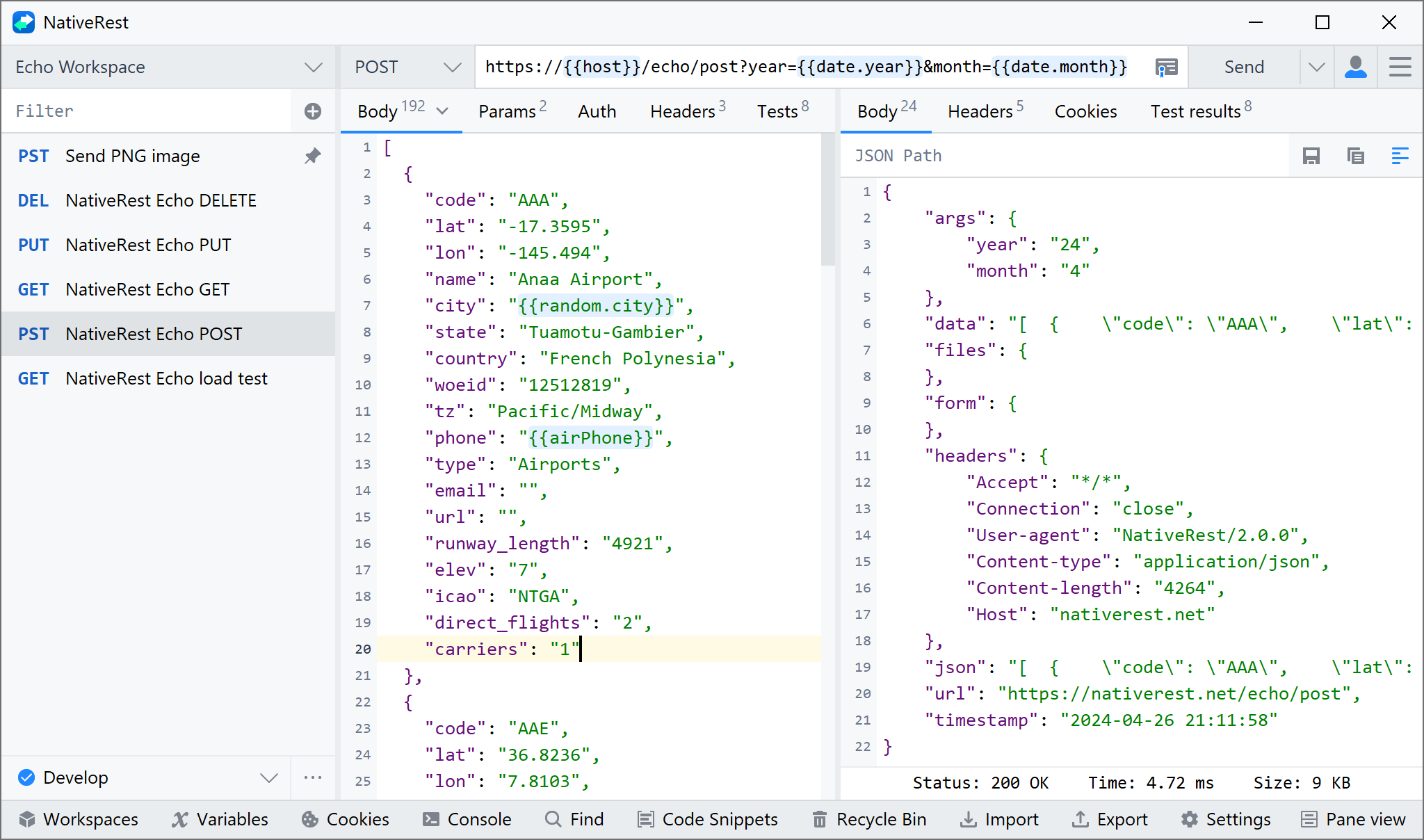You can send DELETE request in NativeRest to connect to APIs you are working with. Your requests can retrieve, add, delete, and update data. Whether you are building or testing your own API, or integrating with a third-party API, you can send your requests in NativeRest. Your requests can send parameters, authorization details, and any body data you require.
Make sure you've downloaded and installed the NativeRest desktop application. When you're ready, open the NativeRest desktop app and send your first API request.
To send DELETE request, select a request method from the list on the left. In DELETE request you can send the body, parameters and headers.

Request Options
Modify any HTTP method or GraphQL request with the following options.
– Body Select a body type from the Body dropdown menu on the tab. Add content
that you want to send in the body of the request.
– Auth The authentication for the request. Select an authentication type from
the Auth dropdown menu on the tab.
– Params Add query parameters to your request URL.
– Header Add a header to your request. For example, Content-Type:
application/json.
HTTP Methods
A request includes an HTTP request method and the URL of the API endpoint. The method indicates the action you want the API to perform. Here are some of the most common methods:
- GET retrieves data from an API.
- POST sends new data to an API.
- PUT and PATCH update existing data.
- DELETE removes existing data.
Configuring request headers
Some APIs require you to send particular headers along with requests, typically to provide more metadata about the operation you are performing. You can set these up in the Headers tab. Enter any key-value pairs you need and NativeRest will send them along with your request. As you enter text, NativeRest prompts you with common options you can use to autocomplete your setup, such as Content-Type.
You used NativeRest to send an API request and got a response from the API server. It's okay to take a moment to sit back and reflect on how cool that is!